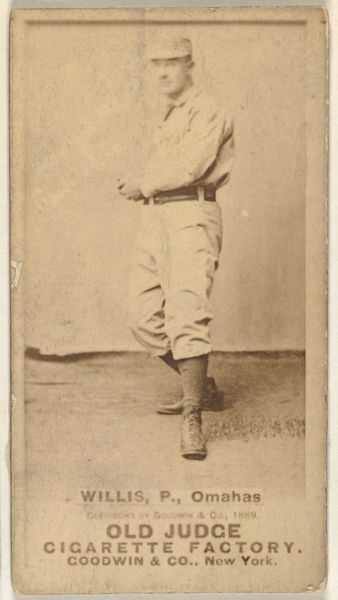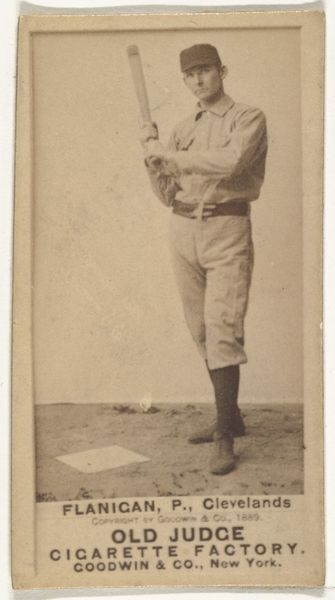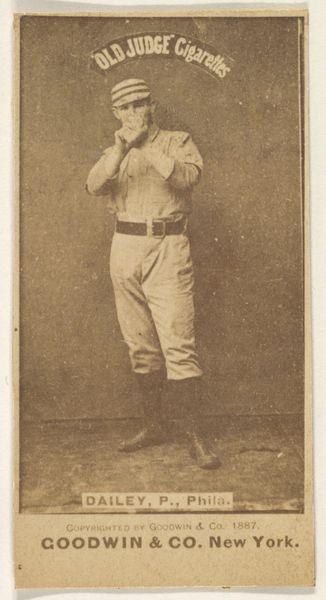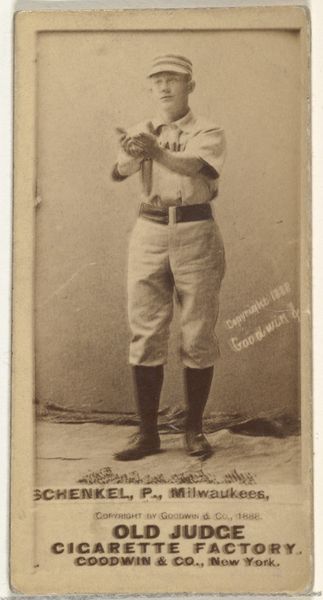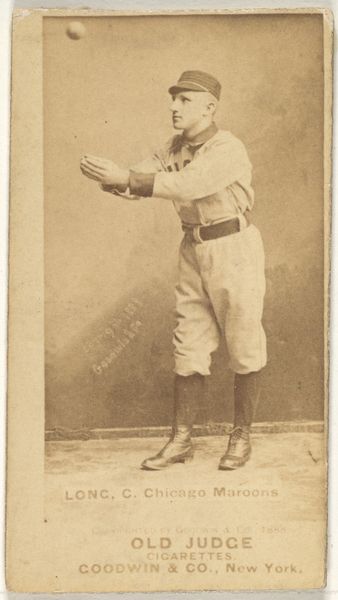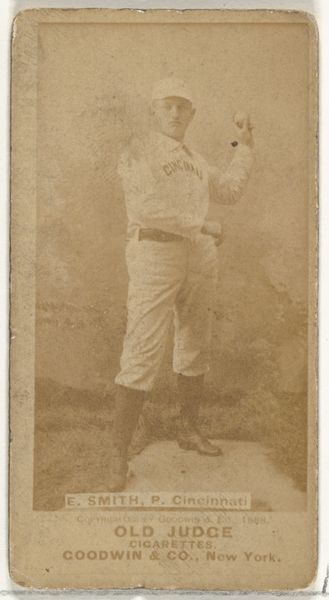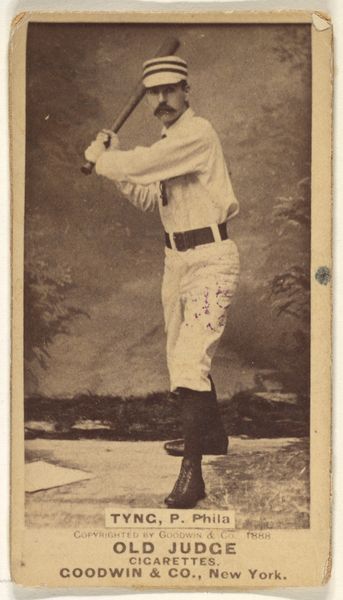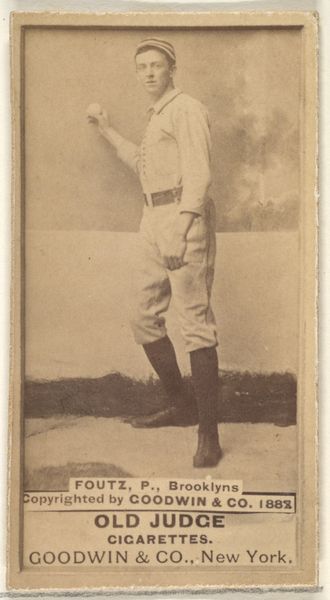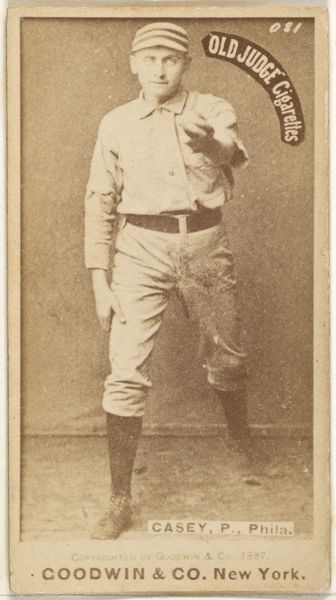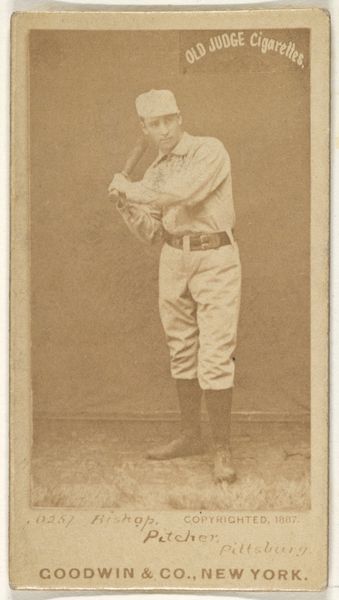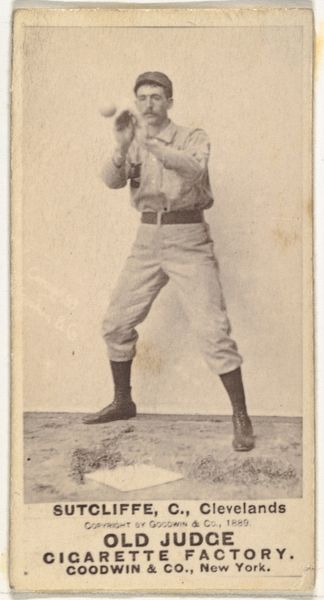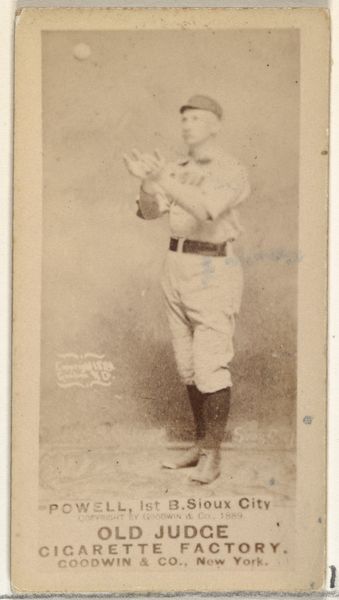
William C. Crossley, Catcher, Milwaukee, from the Old Judge series (N172) for Old Judge Cigarettes 1889
0:00
0:00
print, photography
#
portrait
# print
#
photography
#
men
Dimensions: sheet: 2 11/16 x 1 3/8 in. (6.9 x 3.5 cm)
Copyright: Public Domain
Curator: Let's consider this rather fascinating portrait of William C. Crossley, a baseball catcher for Milwaukee. It comes from the "Old Judge" series, produced in 1889 by Goodwin & Company as a promotional insert for Old Judge Cigarettes. It's a sepia-toned photographic print. Editor: My first impression is how staged it feels. The lighting is soft, almost dreamlike, and the pose…it’s trying to capture action, but lacks dynamism. You can tell it was for promotional purposes; the artistry appears very subordinate to a kind of mass appeal. Curator: Precisely! The cultural context here is crucial. These cards weren't just capturing players; they were marketing a lifestyle. They participated in a growing obsession with celebrity and professional sport. This piece contributes to our broader understanding of the burgeoning sport, the rise of advertising culture, and the intersections with ideas around idealized American masculinity. The players almost appear like mythical figures being displayed on these trading cards. Editor: I see your point, especially concerning masculinity. Consider the material conditions: this image was made as an advertisement intended to be disposed after purchase. These cards promoted a lifestyle heavily associated with factories, consumer culture, the industry of making and distribution…a rather ingenious commodification of leisure by framing it through the male figure of the heroic catcher. There is definitely a capitalist transaction made tangible. Curator: Definitely. But, the appeal, and I use the term carefully, of this image went far beyond its initial commercial function. The mass dissemination through cheap products provided a rare moment of recognition, visibility, for people. For those whose visibility and stories were usually deemed irrelevant. A crucial piece of the larger historical puzzle. Editor: I am not discounting your analysis, especially around accessibility, yet that still fits a consumption model, regardless. I’m still most fascinated by its afterlife and transformation into a collectible commodity, a material signifier far beyond its origins as a throwaway. Curator: So, for you, it’s about labor and repurposing? A narrative arc encompassing production, consumption, and valuation across time. I find the portrait’s subject himself emblematic, situated at an intersection of cultural ideals and capitalist production, an intriguing paradox worth noting. Editor: Yes, and seeing its physical condition adds layers—the tears, the wear, speaking to a life lived, handled, circulated. It adds an extra historical component. Curator: Indeed. Viewing "Catcher, Milwaukee" through these perspectives reveals not only baseball history, but social dynamics, economic realities, and representational practices of the era.
Comments
No comments
Be the first to comment and join the conversation on the ultimate creative platform.
